
About Andrew Cusack
 Writer, web designer, etc.; born in New York; educated in Argentina, Scotland, and South Africa; now based in London.
Writer, web designer, etc.; born in New York; educated in Argentina, Scotland, and South Africa; now based in London. read more
News
Blogs
Reviews & Periodicals
Arts & Design
World
France
Mitteleuropa
Knickerbockers
Argentina
The Levant
Africa
Cape of Good Hope
Netherlands
Scandinavia
Québec
India
Muscovy
Germany
Academica
How Our Ancestors Built
The Hudson River Day Line Building in Albany
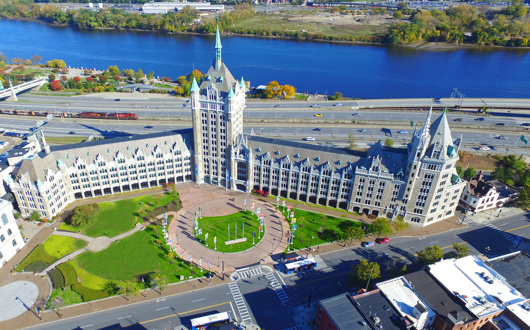
The visitor arriving at Albany, the capital of the Empire State, might be forgiven for presuming the riparian French gothic mock-chateau he first views is the most important building in town.
Built as the headquarters of the Delaware & Hudson, a canal company founded in 1823 that successfully transitioned into the railways, the chateau now houses the administration of the State University of New York. (Indeed, the Chancellor once had a suitably grandiose apartment in the southern tower.) That building, with its pinnacle topped by Halve Maen weathervane, is worthy of examination in its own right.
But next to this towering edifice is an altogether smaller charming little holdout: the ticket office of the Hudson River Day Line.
In the nineteenth century the Hudson River Valley was often known as “America’s Rhineland” and travel up and down the river was not just for business but also for the aesthetic-spiritual searching that inspired the Hudson River School of painters.
The Day Line’s origins date to 1826 when its founder Abraham van Santvoord began work as an agent for the New York Steam Navigation Company. Van Santvoord’s company merged with others under his son Alfred’s guidance in 1879 to form the Day Line.
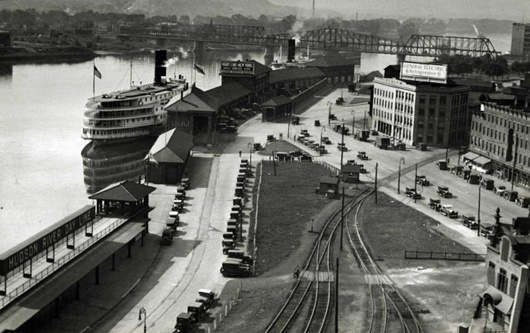
Throughout this period, the line carried passengers up and down the Hudson between Manhattan and Albany in ships with historical names like the Washington Irving, the Robert Fulton, the Peter Stuyvesant, the DeWitt Clinton, and the Hendrick Hudson.
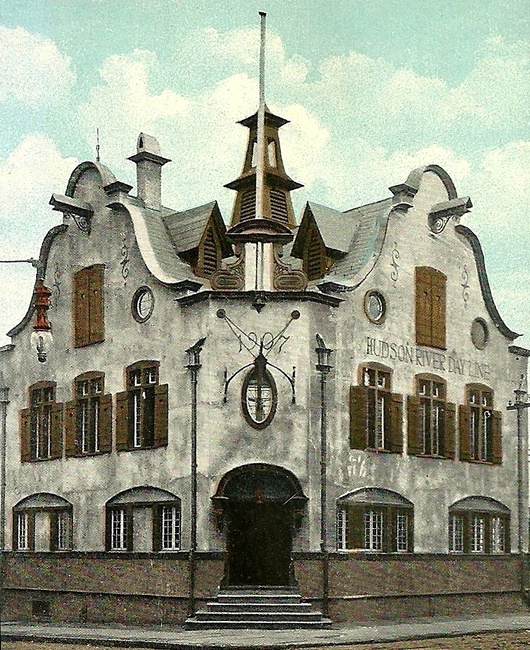
While meant to look like it was built a hundred years earlier, the Albany ticket office only dates from 1907. Designed by Walter van Guysling from the prominent local firm of Ogden & van Guysling, the style harkens back to the Dutch origins of the city and its people, though it shows a strong Germanic influence as well.
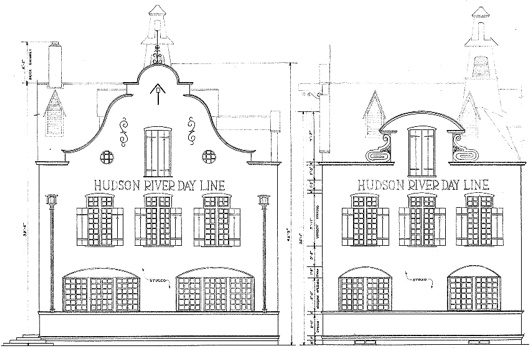
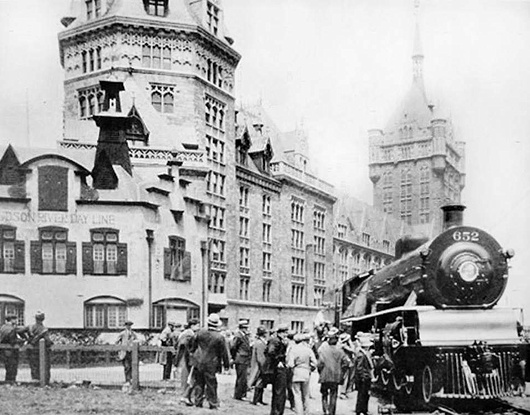
Commodore van Santvoord died in 1901, leaving the company in the hands of his son-in-law Eben Olcott, and despite the competition from railroads the Line’s numbers peaked at two million passengers in 1925.
What the line couldn’t compete with was the postwar move to automobiles, and in 1948 the old family sold up. Their last steamer, the Alexander Hamilton, stopped in 1971 and sank in a fire in 1977 but by that point the company had been taken over by the Circle Line which kept it as a separate brand until the 1980s.
The Day Line lives on, however, in this excellent little building, which it appears is now up for sale.
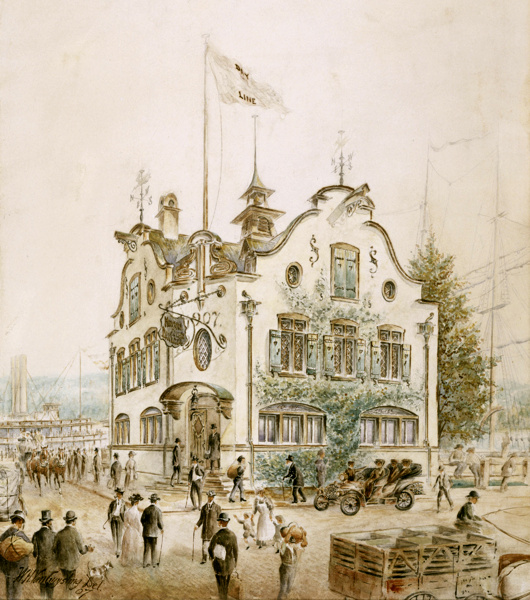
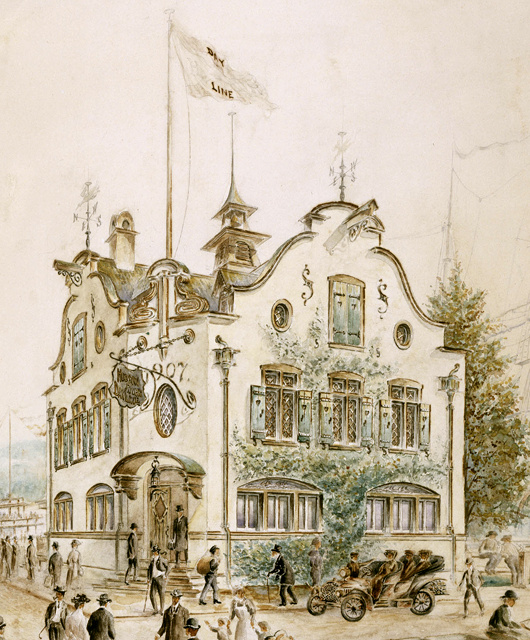

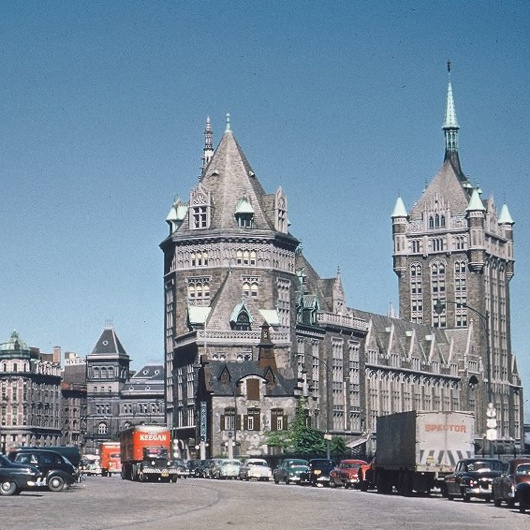
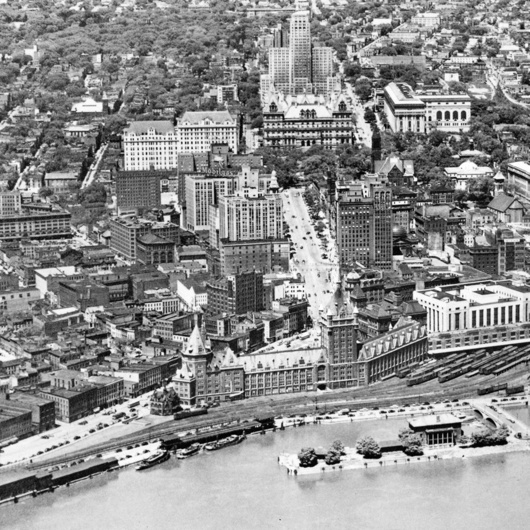
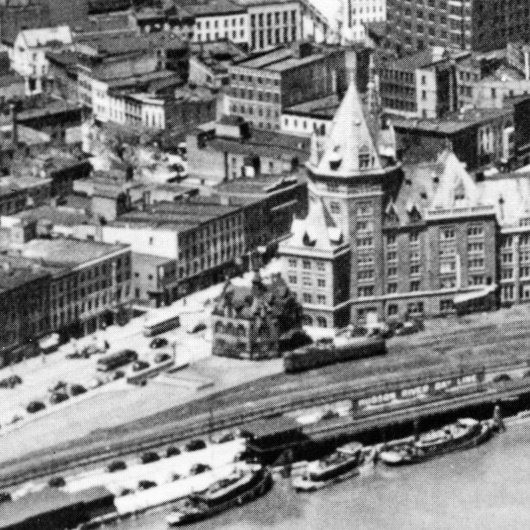
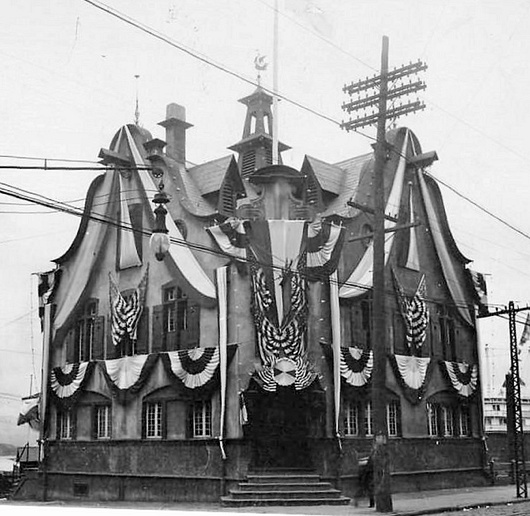
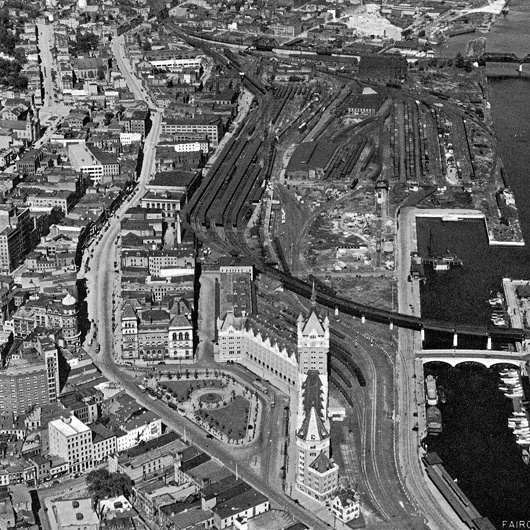
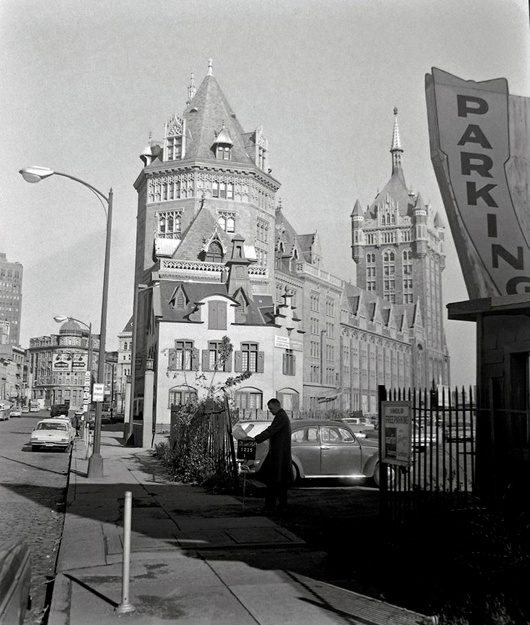
New York History: A Short History of the Hudson River Day Line
Hudson River Maritime Museum: The Hudson River Day Line 1863-1971
Search
Instagram: @andcusack
Click here for my Instagram photos.Most Recent Posts
- Burns Tower April 19, 2024
- Patrick in Parliament March 18, 2024
- Articles of Note: 13 March 2024 March 13, 2024
- Cambridge March 9, 2024
- Taken on Trust March 4, 2024
Most Recent Comments
Book Wishlist
Monthly Archives
Categories




An instant classic Mr Cusack, if only because so much has been devoted to so something so … little.